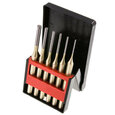How to Sharpen a Chisel
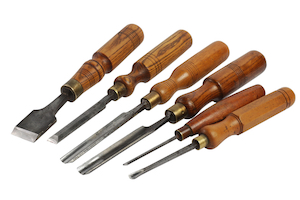
Figure 1: A six-piece set of chisels capable of handling the majority of chisel work.
A sharp chisel allows for cleaner cuts that require less effort. For example, proper wood chisel sharpening gives this tool the ability to carve paper-thin pieces of wood off a wood block effortlessly. Also, like a knife, a sharp chisel is safer. Dull chisels tend to slip, which endangers the user’s body. This article provides an understanding of the various tools available for wood chisel sharpening.
Table of contents
- How to sharpen chisels
- Using a whetstone to sharpen a chisel
- Using a buffing wheel to sharpen a chisel
- Using a bevel mount
- Using a leather strop to hone a chisel
- Checking the sharpness of the chisel
- Whetstones
- Chisel steel
- FAQs
View our online selection of chisels!
How to sharpen chisels
This section details how to use whetstones and a buffing wheel to sharpen chisels, and a strop to hone chisels. The recommendation is to hone a chisel’s edges after 30 minutes of use and sharpen the chisel after two hours of use. Honing means realigning the metal on the chisel’s edge to maintain its effectiveness, and sharpening means creating a new edge.
Using a whetstone to sharpen a chisel
No matter the whetstone, the process is similar: first, sharpen the back of the chisel and then the front beveled edge. Brand new chisels need sharpening as well. This process is typically known as initializing the chisel. When initializing a chisel, the goal is to remove all manufacturing marks on the back and beveled edge.
One key aspect to understand is the stone’s grit, regardless of the type of whetstone. Grit is the measurement of how coarse or fine a whetstone is: the lower the grit, the higher the coarseness. A coarse grit provides fast sharpening but cannot give a refined, sharp edge like a fine grit whetstone can.
Use a grit progression when sharpening with a whetstone. This means starting with coarse grit (lower grit values) and moving up to fine grit (higher grit values). With each grit, follow this process:
- Place the back of the chisel flat on the whetstone. It needs to remain flat to the stone during this process. The entire back of the chisel does not require sharpening, just the first 5 cm (2 in) from the front of the blade.
- Move the chisel up and down the whetstone several times.
- When a burr forms on the front edge of the chisel, flip it over to sharpen the beveled edge.
- Place the front bevel flat on the whetstone and again move the chisel up and down the whetstone several times to remove the burr.
- After sharpening the front bevel, move to a higher grit and repeat the entire process.
Notes:
- When using a waterstone, prepare it by submerging it in water for at least 15 minutes.
- When whetstones get dry, spray them with water.
- Do not spray diamond stones with water because this will promote rust. Instead, spray diamond stones with window cleaner.
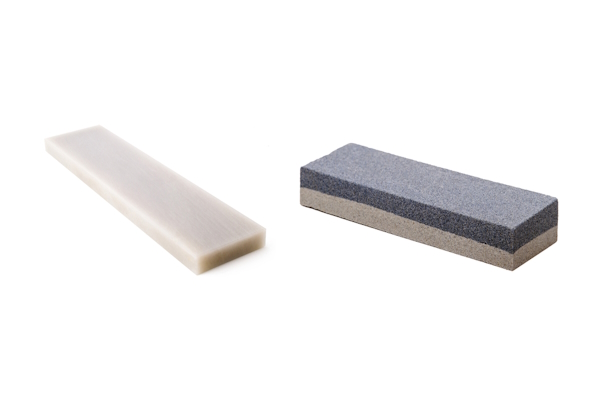
Figure 2: Sharpening whetstones: arkansas (left) and waterstone (right).
Using a bevel mount
A bevel mount holds a chisel while sharpening the chisel's beveled edge on a whetstone. The mount ensures the chisel maintains the correct angle during the sharpening process. While this tool adds precision to the sharpening process, it also adds time and complexity.
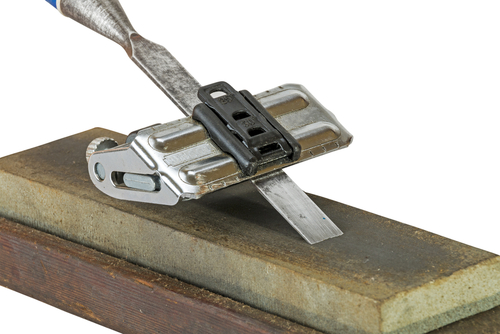
Figure 3: A bevel mount guides a chisel during the sharpening process.
Using a buffing wheel to sharpen a chisel
When using a buffing wheel to sharpen a chisel, the goal is the same: to sharpen the back and front beveled edges. After turning on the buffing wheel, follow these steps:
- Place the back of the chisel against the flat edge of the wheel for a few seconds. Do not use a lot of pressure.
- Place the chisel's beveled edge against the wheel's round edge for a few seconds. Again, do not use a lot of pressure.
Sharpening a chisel with a buffing wheel is as simple as this. However, most woodworkers who want a sharp edge opt for whetstones and a leather strop. A careless woodworker can easily round out a chisel's edges.

Figure 4: A woodworker uses a buffing wheel to sharpen a chisel.
Using a leather strop to hone a chisel
After the sharpening process, use a leather strop to hone a chisel’s edges. Honing a chisel on a strop is similar to a whetstone. First, prime the leather with 0.5 microns honing compound which equates to a 30,000 grit whetstone. Move the back and beveled edges of the chisel against the strop several times. In total, the honing process should take less than 1 minute.
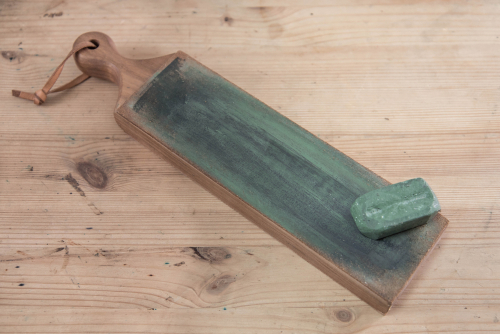
Figure 5: A leather strop primed with honing compound.
Checking the sharpness of the chisel
There is a simple test to determine if a chisel is sharp enough. Push the edge of the chisel against the edge of a piece of paper. The chisel should cut through the paper similarly to how scissors cut through paper. If there is any tearing of the paper, refine the chisel’s edge with further sharpening.
Whetstones
There is a variety of whetstones available for sharpening a chisel:
- Diamond stones: known for their durability and flat surface
- Waterstones: available in both natural and synthetic forms, with synthetic ones offering higher grit options
- Oilstones: man-made from aluminum oxide or silicon carbide, with the latter sharpening faster
- Arkansas stones: natural stones from Arkansas in various grades for different sharpening needs.
Chisel steel
Wood chisels come in different metal types and these different types sharpen differently.
Woodworkers who prefer to get to work quickly may choose:
- O1
- Chromium vanadium (CV)
- Chromium manganese (CM)
Woodworkers who want a chisel edge that retains sharpness for a longer time, but is more difficult to sharpen may choose:
- A2
- PM-V11
For a broader understanding of chisel types, read our chisel overview article.
FAQs
What is the best way to sharpen a chisel?
The best method for sharpening a chisel depends on what the chisel is needed for. For example, really fine and detailed woodwork needs a very sharp chisel. In this case, use a high grit whetstone and leather strop to sharpen the chisel.
How do you hand sharpen a wood chisel?
A wood chisel can be hand sharpened using a whetstone and a leather strop.
Can you use sandpaper to sharpen a chisel?
If no other tools are available, sandpaper can be used to sharpen a chisel. However, it cannot provide a very sharp edge like high grit whetstones can.




